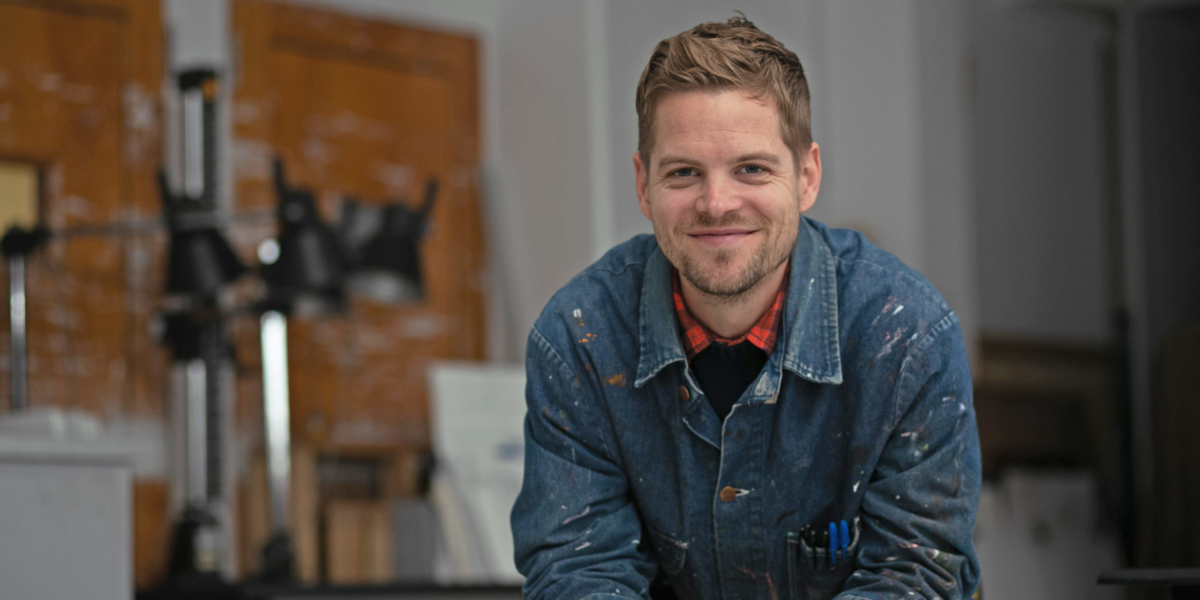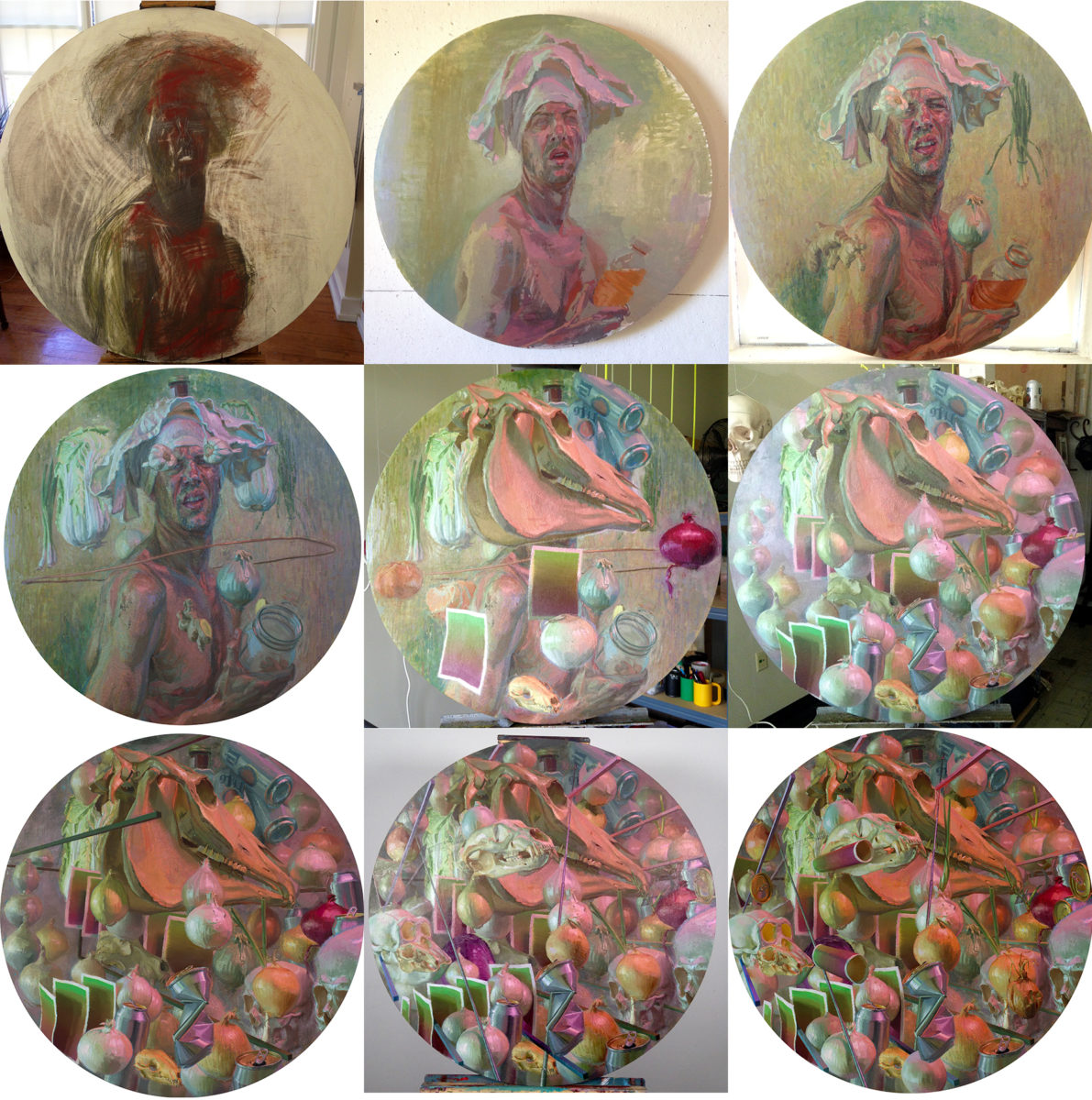
Artist Talk: Fine Artist Neil Callander addresses ‘spearing the white whale’ of a blank canvas
Monday, March 21st, 2022
As an artist and educator, painter Neil Callander draws from each experience to feed and nurture the other:
Work in the studio helps him refine what he teaches, and work in the classroom helps him distill his next steps in the studio.
The PCA&D community will benefit from that experience on March 31, when Callander presents an online artist talk. An Assistant Professor of Art at the University of Arkansas, Callander is celebrated for his use of color and cultural and personal references. “The viewer will always manifest some sort of narrative meaning,” Callander writes in his artist statement, “and since the viewer brings absolution to a painting, I fully support diverse interpretations. My intentions are to lean into what a painting does well and trust that the ambiguity that arises is important.”
We asked Callandar about “four Ps”: Process, pandemic, paint, and palette. Here’s what he had to say:
You’ve mentioned in past interviews that teaching is integral to your creative process. How so?
Neil Callander: Teaching painting and drawing courses feels like a semester-long party — everyone has to play all my favorite games. The great gift of teaching is that it forces you to clarify your thoughts. When I become convinced that I have great advice to give students, I then have to be brave enough to take my own advice in the studio.

A progression through the creative stages of Neil Callander’s “Healing Grounds.” Image courtesy of the artist.
Art students explore so many different mediums as they study… How did you settle on paint as your medium?
NC: I prefer making work from scratch in an inefficient and protracted manner. Although I had a brief affair with ceramics, I’m addicted to a type of painting (and drawing) in which my brain and body are reflected back to me without mitigation from machines or prescriptive processes.
The first thing artist Neil Callander does when faced with a blank canvas is “immediately spear the white whale so that I can respond to actual painting problems and not imaginary ones.”
A self-portrait in your Instagram feed inspires this: How has the pandemic influenced how you work and your choice of subjects — or hasn’t it, really?
NC: Pre-pandemic I was already fixated on notions of life and death. I’m slow to finish paintings so I really don’t know what the effect on my work has been — maybe in 10 years I will.
When you’re faced with that absolutely blank, prepped canvas, what is the first thing you do?
NC: I immediately spear the white whale so that I can respond to actual painting problems and not imaginary ones. After a painting has begun there is no formula for finishing — each painting is a quest.
Color is key in your work… what’s on your studio palette right now?
NC: As I work on a painting, my palette shrinks as I identify the key colors. Right now I’m using Raw Sienna, Cadmium Red Light, Mars Black, Cobalt Blue, Phthalo Green, and my own white concoction of Titanium, Zinc, and Iridescent White + marble dust and cold wax.
LEARN MORE
Neil Callander website: here
Neil Callander Instagram: here
